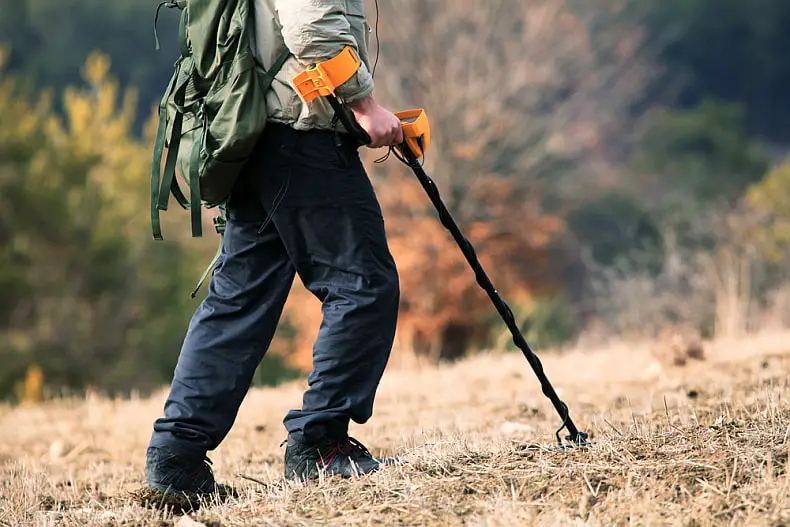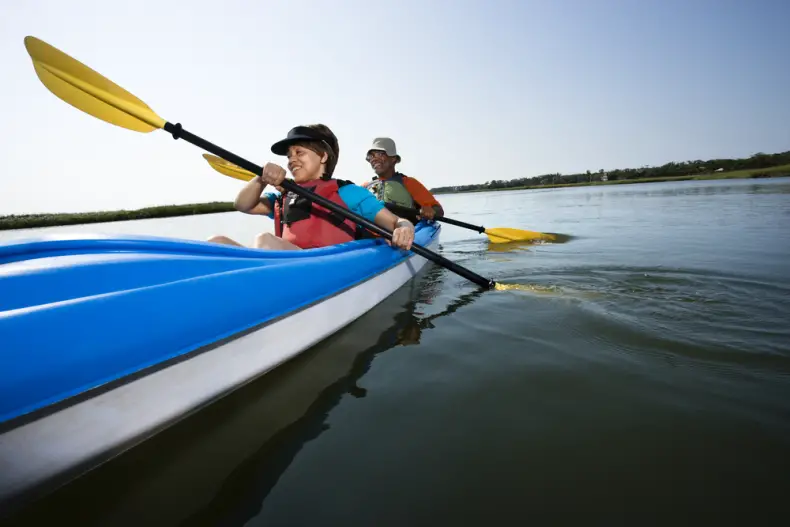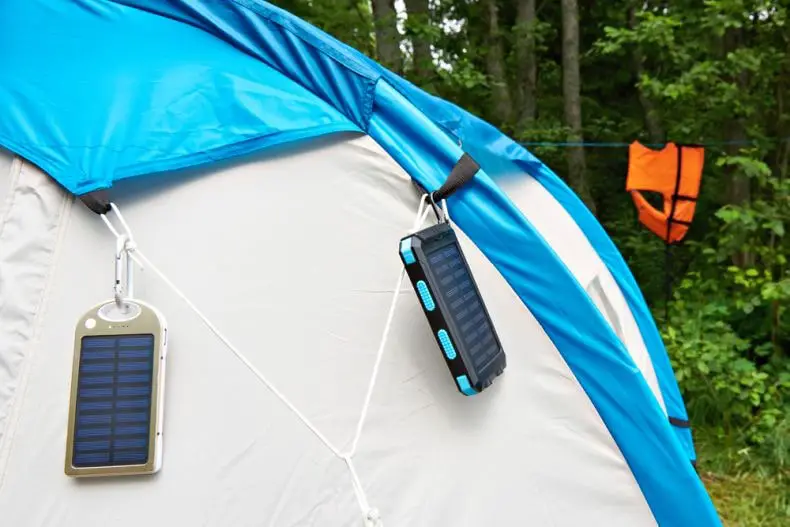Dry Ice is a pretty useful form of cooling that we have been able to utilize well for some time now. Many campers want to use it more and more, but many simply need to know how to use Dry Ice for camping before doing so.
Table of Contents
What Is Dry Ice?
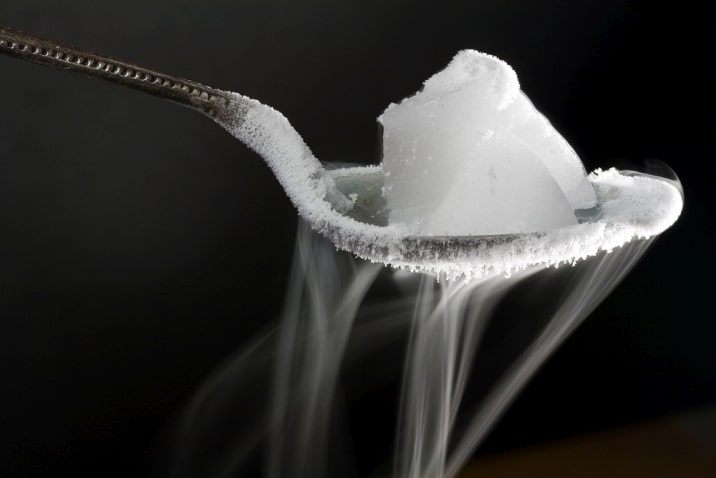
For those unaware of what Dry Ice actually is, it’s merely a solid form of carbon dioxide that is used mostly for cooling things.
You might see it utilizes during major stage performances for its ability to create an interesting fogging effect. It looks good and can go away much quicker than smoke. Plus, it’s not as big of a problem to use repeatedly for stage actors or audience members due to it going away much faster.
It also regularly tends to be much easier to breathe around, thereby not causing the same inhaling issues that repeated smoke use would. There are other big advantages to it beyond this, however.
It is at a lower temperature than ice made from frozen water or H2O. It does not leave any residue, unlike water. This also includes not leaving any accidental frost or moisture when it gets into the atmosphere. Yet that also can create a disadvantage, in that it does not last as long isolated.
While it is used for performances, obviously the biggest use is in cooling. Most tend to use Dry Ice when mechanical cooling is simply not available. Such as in outdoor situations.
Dry Ice Can Be Dangerous

A lot of people tend to come in contact with Dry Ice when it’s used in performances or in major coolers. When it is in a big cooler, you’re likely not going to experience many dangers. On top of this, once it is blown through for stage productions, Dry Ice is no longer a major threat.
It’ll be a bit cold, but it won’t affect you like getting hit by the stuff in Fire Extinguishers. While they too use a form of Gastrous Carbon Dioxide, they also use Liquid. The two come together to make the stuff stick at times. While cold, Dry Ice will go away quickly and leave behind no trace.
Yet the dangerous part about Dry Ice is usually in how one handles it. The big thing to remember is that Dry Ice does turn from a solid into a gas around -109.3 degrees Fahrenheit or -78.5 degrees Celcius.
This is extremely cold, which means it could quite literally freeze you to death if you were sprayed with the stuff. If you thought Mr. Freeze from the Batman comics was far-fetched, trust us when we say that this dude could do most of what he did with just utilizing Dry Ice!
This massively cold temperature means you need to handle it with caution. At the least, not doing so can result in freeze burns or frostbite. Of course, many might use it for performances. It might not be very toxic normally but this can change when outgassing it. This has been known to cause a severe issue known as Hypercapnia.
This is a period in which your body’s blood is hit with elevated amounts of carbon dioxide. Thus, we cannot say enough to use dry ice with caution!
Using Dry Ice For Camping
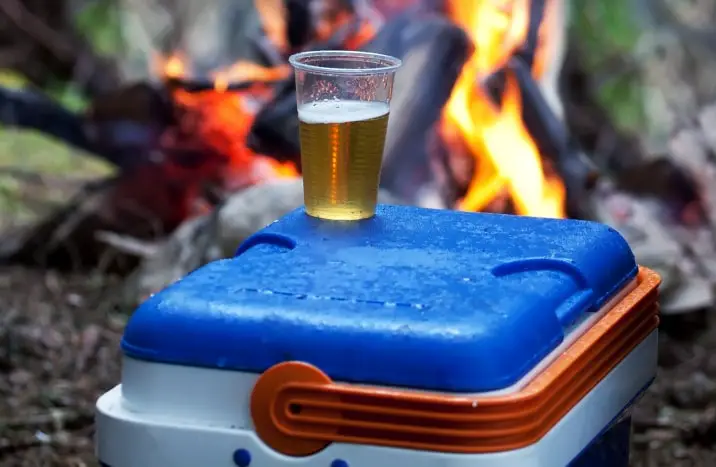
Naturally, with dry ice being so useful…it makes sense to feel it is best to take on a camping trip versus other forms of cooling, right? Ultimately, this is hit and miss. Let’s discuss some of the advantages.
Advantages:
First, due to being colder, it WILL last longer in your cooler versus regular water-based ice. Of course, many coolers can keep regular ice for a day or two at least. Therefore, if your cooler can do this then you can pretty much guarantee dry ice will last a few days longer. Likely even more!
Since dry ice turns into a gas and not a liquid when it expires, you won’t have to deal with puddles of water being left behind. This is a big deal, as it means you won’t have to dump anything out of your cooler when done when using dry ice.
It can last longer than normal ice in some cases. Yet this is not always true. 5 to 10 pounds of dry ice will disappear in 24 hours isolated. In a cooler, this can likely be much longer.
Disadvantages:
Mostly, this comes down to dry ice being so freakin cold. In your cooler, your ice made of water typically is at 32 degrees Fahrenheit or less. This means it can be at a temp that won’t overcool any food or make a liquid into a solid block of ice.
While this can still happen in cooler environments, it’s just not typical in a cooler with ice. On top of this, many feel that due to how dry ice is used, water ice will need to be around or more dry ice will need to be purchased.
This is because dry ice often comes in a big block, sort of like cannabis when drug dealers sell it, but less fun. This block of dry ice cannot be broken up like regular ice cubes, as it will lessen the amount of time dry ice will remain. Meaning it MUST be a block.
Due to that, most of the time dry ice sits on top of things like food and not under it. Your cooler with dry ice will also need to be handled differently than regular coolers with water ice too. That is not even discussing the fact that in order to move the dry ice around, you’ll need protective gloves.
How To Use Dry Ice For Camping

You’re sold on dry ice and want to use it for camping, now what? Most of the time, finding dry ice is not exactly difficult. Many stores sell it like Walmart, Safeway, and many more. Yet we believe it is best to buy it the closer you are to your camping site.
This is because you do not want to risk it not lasting as long as you’d like it to. Therefore, if perhaps you’re in Dallas, Texas but will be camping somewhere near Houston, Texas…you’re better off buying the dry ice in Houston. Makes sense, right?
Now, be sure to carry gloves with you to handle the stuff. We also advise you to take some newspaper, which will fill out the rest of the cooler and effectively keep it cool. You’ll also want to wrap the dry ice inside of this newspaper too. That’ll make it much easier to handle or move.
It is often advised to wrap it in about 3 layers of newspaper at the least, nothing less. This is mostly due to the thin nature of the newspaper, but also due to the fact that you want to make sure it does not make your items TOO cold. Dry ice will actually freeze foods that it comes in direct contact with.
Because dry ice will keep a cooler cold, really cold, frozen foods keep well. Frozen food will stay frozen if you pack it with dry ice on both the top and bottom of the frozen items.
Storage:
Many also advise that you do not leave your cooler with dry ice in your tent. That might be due to the fact that the cooler will be cold with normal ice. Yet dry ice only intensifies this, making it much much colder and thereby giving off a very cool temperature.
This may or may not be too cold for being in a tent. Therefore, you just need to consider how cold is too cold. For times of the year that get incredibly hot, such as a Texas heat of 100 degrees in July, leaving your cooler in a tent is not necessarily a bad thing.
It might even give you the feeling of having air conditioning. However, when you plan to open the cooler, it is best to do outside the tent. There is no odor to dry ice, but this is still carbon dioxide.
Too much of it can still be lethal. Sure, opening a cooler with pure dry ice and no filter at all may not be too bad. However, you do not want to take any unnecessary chances. Depending on how heavy your cooler is, it might just be good to leave it outside.
If not, be sure your tent door is open when you open the cooler inside the tent. We feel that you’ll likely benefit heavily from using it to keep things cool. However, we cannot stress enough to remember the safety tips we went over.




